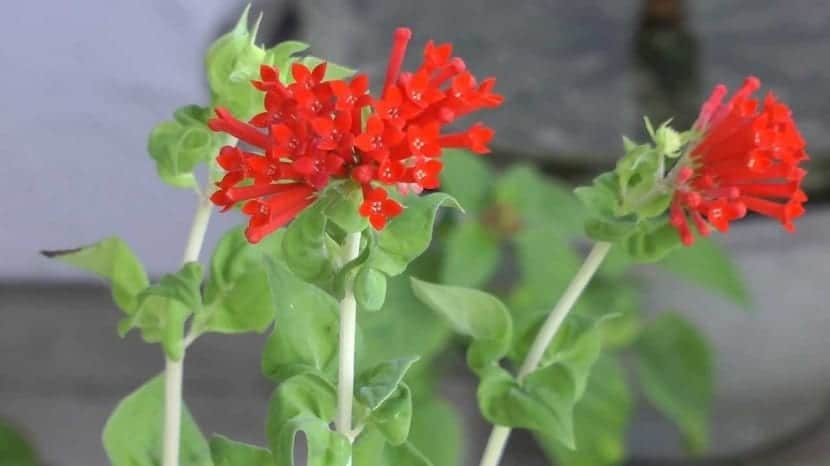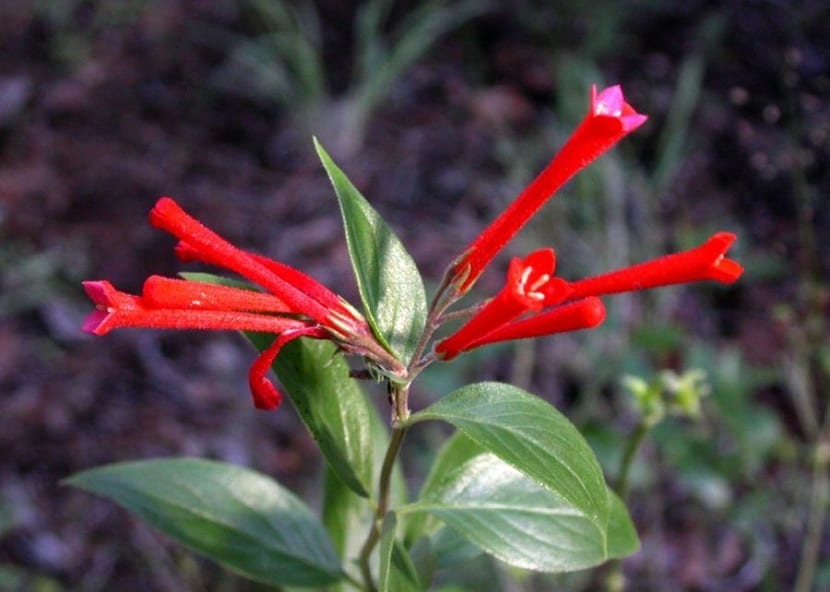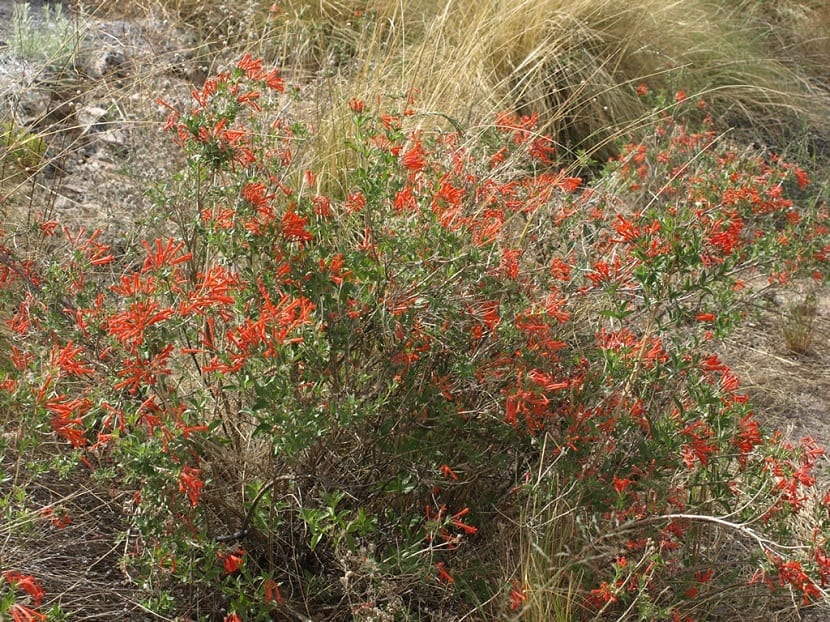
Surely you have ever seen a flower with a trumpet shape and a great color that attracts and greatly enhances the ornamental value of the area where it is placed. Well, it's about the Bouvardia ternifolia. It is well known for its peculiar shape of the trumpet flowers and with the very powerful scarlet red. It comes from Central America and is very abundant in the Mexico area. Among its common names we can find contragrass, red contragrass, Indian grass, myrtle, trumpet, and grass of astonishment.
In this post we are going to talk about the characteristics, uses and care that Bouvardia needs to be splendid and improve all those areas where it is planted. Do you want to know more about her? You just have to keep reading 🙂
Key features

The Bouvardia is a type of shrub of a size between 30 cm the smallest specimens and 1,2 m the largest. The leaves are also striking as they have a glossy dark green color and are oval in shape. Normally in this type of bushes only their flowers stand out and the leaves go a little unnoticed, but in this case, everything stands out in sight.
Its flowers are trumpet-shaped and stand out for their scarlet red color. They are very striking and are ideal not only for gardens, but to decorate paths and even premises. The flowers can be found placed as if they were clusters. They have numerous tubular branches and quite long in size.
This plant not only attracts human beings due to its beauty, but also contains a rich nectar in its red corolla that hummingbirds take advantage of to satisfy their hunger.
Reproduction of the Bouvardia ternifolia

Bouvardia is a type of perennial plant, so we can enjoy its glossy dark green leaves all year round. Therefore, it is worth having them in the garden so that, in the cold winter months, we do not have the garden so sad and gloomy. It is better to choose a good variety of plants that are deciduous and perennial so that you do not always have the same garden. In this way, depending on the season of the year in which we are, our garden will look one way or another.
In this case, the Bouvardia ternifolia it can be reproduced in various ways. The first is for seeds and the second for cuttings. These plants need a soil that is a mixture of sand and clay. It does not have to be very humid, but it can be dry or rocky. The advantage of the Bouvardia is that it is a quite resistant plant and it will not give many problems. We will have a very attractive and colorful plant without having to take into account much about the substrate.
The best way to make our Bouvardia grow healthy is to put it in full sun. If we don't have enough space or want to place it elsewhere, it also survives well in partial shade. If the shade is more frequent than the sun, it may suffer some damage since it needs hours of sunlight a day to carry out its photosynthetic processes.
As for the weather, This plant supports warmer climates better, although it is cold tolerant. We can find it naturally on the roads and paths or in even more remote areas. As we have mentioned before, since you need a soil that is preferably dry, there are no problems with watering. In many cases, rainwater will suffice.
Most widespread uses
Another of the qualities that make this plant so good to have is that it has many uses. For a long time, in the area where this plant comes from, Mexico, it was widely used as a medicine to cure various diseases. This meadow grass was used to heal wounds caused by certain types of snakes. And it is that the nectar of the Bouvardia is curative apart from delicious for the hummingbird.
The leaves and flowers were placed in a mortar and crushed and then placed on the affected area. This preparation was also used for people with toothache or sprained feet or other limbs. You can prepare an infusion with the dried leaves and drink it warm to regulate stomach transit and relieve pain caused by diarrhea and menstrual pain in women.
Today, it has been learned that this plant has excellent healing properties against rabies and dysentery. In addition, it has analgesic properties that serve to treat some more severe pain from the cold, the flu or the general discomfort caused by fatigue.
However, despite the fact that these medicinal benefits are widespread, it is the ornamental and landscape use that wins the trophy. La Bouvardia decorates gardens, homes, highways, avenues and even shopping centers and restaurants.
Necessary care

To enjoy this plant in all its splendor we have to comply with certain necessary care that the plant requires. We have mentioned the first before, but it is worth remembering it. You need a location where you can have direct sunlight for quite some time, although it survives well in semi-shade. Being a plant from tropical places, it does not withstand frost well. So, make sure your climate doesn't frequent low temperatures a lot.
Ideally, the annual mean temperature of the climate where develops is about 16-18 degrees. It does not need excess humidity, so it is good to place them in airy places. As for watering, it is hardly necessary to water it in winter unless it does not rain at all. In the warmer times of spring and summer, they must be watered twice a week and fertilized with a mineral fertilizer.
To enhance its beauty, it is good to do a drastic pruning in late winter so that it grows gleaming when spring and summer arrive. You have to be careful with aphids, White fly y mealybugs, since if the environment is dry and irrigation is scarce, these insects will take advantage to attack.
I hope that with these tips you can enjoy the beauty of Bouvardia ternifolia in your home.
